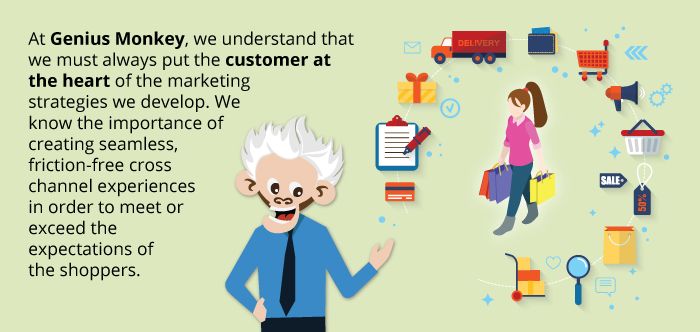
There are exponential changes occurring in the field of retail. Recent research indicates that at least 58% of retail sales (non-grocery) is expected to be influenced by digital in 2017. More astounding is the fact that this figure equates to an additional $86 billion in non-grocery retail sales this year that will be influenced by digital, as brands continue to strive to deliver truly integrated digital experiences to their customers by improving their mobile strategy.
It may surprise some to find out that more U.S. retail stores have closed their doors in the first quarter of 2017 than in the entire year of 2016. The culprit responsible for such drastic changes-digital influence.
“…more U.S. retail stores have closed their doors in the first quarter of 2017 than in the entire year of 2016.”
The fact that digital is rapidly changing the role of retail stores is welcome news to businesses, but only to those that are conscious about leveraging this huge opportunity created by mobile shopping. Savvy store owners that retain touchpoints across the physical and digital plains realize that while walk-in traffic has decreased 60%, the customers end up buying more when they do go in … to the tune of 20% more. This is largely due to the fact that consumers are able to research online and to educate themselves, allowing them to shop with more of a purpose. They can do their “homework” before going into the store and, thanks to mobile, they needn’t be “home” to do it!
When it boils down to it, consumers are interacting more with brands via digital than they are in person. The line separating online and offline is becoming more and more blurred-to the point that, to the customer, there is no longer any line at all.
Whether shoppers are visiting brick and mortar stores or just browsing online, they expect an experience to be relevant and consistent. If they start their shopping journey online, and end up in the store for more info, they want the store employee to be able to see what is in their shopping carts. Retailers must offer well-choreographed shopping experiences across channels to meet the expectations of their shoppers.
“Retailers must offer well-choreographed shopping experiences across channels to meet the expectations of their shoppers.”
Best Buy is a good example of a retailer that has taken advantage of the blurred line between online and offline service. They have designed their online store to mirror their retail stores. They understand that shoppers are going to do their research digitally before coming in to learn more. They provide buying guides online, accompanied by video tutorials. Having substantially increased their investment into mobile, they have developed Local Inventory Ads, a version of shopping ads that allows shoppers to look for a particular item, determine if Best Buy carries it, and find out if they have it in stock-before even entering the store!
Home Depot is another retailer that is keeping abreast of the mobile movement. Once they realized that over half of their traffic was online, and that 42% of those items were being picked up in the store, they reorganized their marketing teams. They combined their online and store teams to one cross-channel team. Part of this group places their focus on strategy, budgeting and planning, while the other team is geared towards activation and execution.
Sprint hopped on board the “experimental train” by increasing their search presence in certain markets and decreasing it in others. It was in the increased markets that they realized a 32% lift in store sales and a 26% increase in digital sales driven by search.
It is not nearly as simple to measure the effects of digital as it used to be. There are always gaps between the different channels, but that is no issue for Genius Monkey. We have evolved in our measurement and attribution strategies, as well as KPIs, to account for the growing mobile surge. We have always embraced an experimental mindset, doing whatever is needed to maximize ad effectiveness and increase ROI for our clients.
“There are always gaps between the different channels, but that is no issue for Genius Monkey.”

At Genius Monkey, we understand that we must always put the customer at the heart of the marketing strategies we develop. We know the importance of creating seamless, friction-free cross channel experiences in order to meet or exceed the expectations of the shoppers. The businesses that will negotiate the mobile onslaught by being there in the micro moments, when the customers need them, and addressing the consumers’ needs at every touchpoint, are the businesses that are on the winning path to success.



